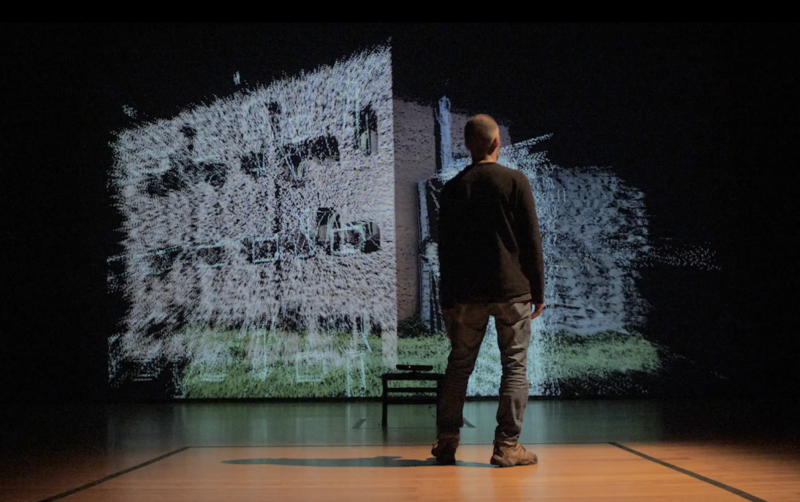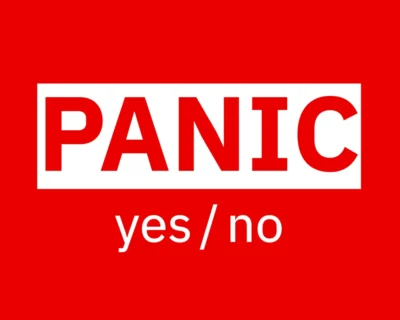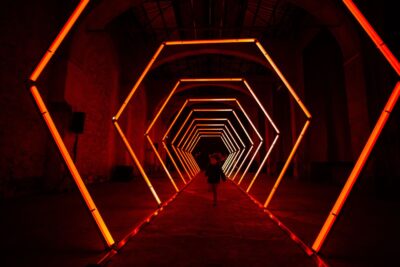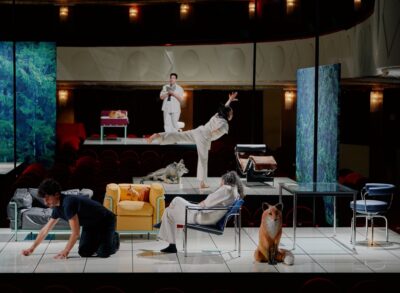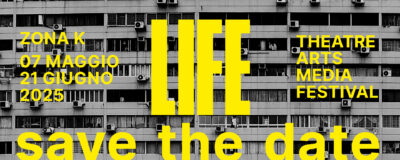For the second time here I am to interview one of the most explosive and creative Designer & Interactive New Media artist from Porto/Portugal Rodrigo Carvalho. He introduces his project: Boris Chimp 504 – Miguel Neto (Sound) and Rodrigo Carvalho (Visuals & Interactive Systems) – They have presented AV live & interactive installations on festivals: Sonar (Barcelona), Mutek.Es (Barcelona), ADAF (Athens), BAM (Liège), ECHO (Dubai), Stereolux (Nantes), Iminente (Lisbon) among many others.
See also https://visiophone-lab.com
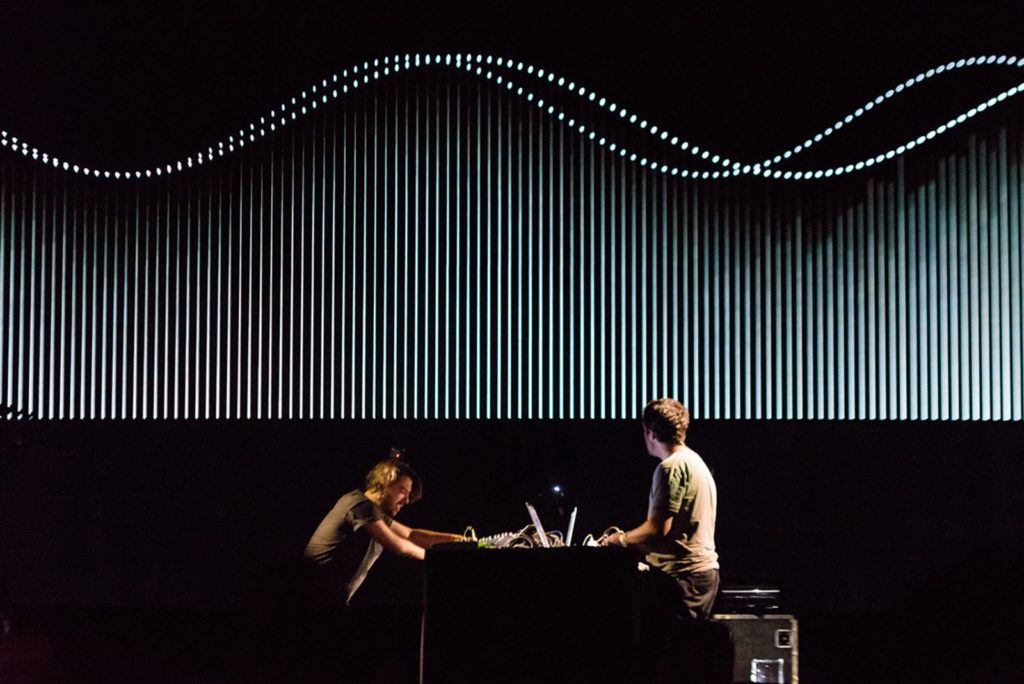
1. Can you describe Vanishing Quasars and Multiverse and in general your work in AV live?
Vanishing Quasars is the most recent AV Live from my project Boris Chimp 504. Boris Chimp 504 was created 10 years ago together with Miguel Neto, I am the visual side of the project and Miguel the sound side.
Along these years we have been creating sci-fi oriented AV Lives and Interactive Installations focused on the narrative of Boris, a chimpaze sent to the moon on 1960s that never came back.
In each artwork we try to create a narrative fiction related to the adventures of Boris in space. Multiverse was our previous AV Live, which we performed between 2015 . 2019 in different events and countries like: Sonar (Barcelona), ADAF (Athens), BAM (Liège), ECHO (Dubai), Stereolux (Nantes), etc.
Vanishing Quasars was premiered in the fall of 2019 (Electroalternative, Toulouse; Fotonica, Rome; Criatech, Aveiro and 948Merkaba, Pamplona). And we were expecting to present it many places in 2020, but then the virus came. Even though, we were able to present two times in Portugal (Museu Zer0, Tavira and Som Riscado Loulé).
In our AV Live the visuals are all generated in real time, made with VUO+VDMX. I have a set of pre-prepared independ programs/sketchs, in each a set of parameters manipulated live on stage, some directly by me (with a MIDI controlled) others react to audio.
2 Which are according to you the turning point in the history of AV?
I am not sure when was the turning point in the history of audiovisual live performance, but for me was around 2008/2009 when I watched live some AV performances like Alva Noto, Rioji Ikeda or Ryoichi Kurokaw. There I realised that I wanted to work on that field, and bit later I started (together with Miguel Neto) the AV Live project Boris Chimp 504.
2. Recently I saw a special “live coding”: is it a sector in which you too are expert? And if not, do you know any authors/group significant ?
I have watched some live coding events and I think they are visually interesting, but I have some difficulties in understanding it and I don’t feel very attracted to that field. For me coding is everything but performative or live, at least in my practice. I use different coding software and tools on my projects (as Processing, Vuo or Max), but the process of creation is long, repetitive, and I guess not very interesting for a potencial audience. I can spend hours trying stuff without any interesting results, getting errors, trying to solve those errors, checking the documentation, checking forums, I am not sure how live coders perform on stage, maybe they already have their “code formulas” memorised in a way that they typed it in and are able to make it interesting for a live performance.
3. Can you describe which dramaturgy or story telling is at the basis of the experience you want to create for the public?
In the case of Boris Chimp 504 the narrative is always focused on the adventures of our chimp cosmonaut in space. The name BORIS CHIMP 504 was taken from a speculative fiction article written by Dwayne Allen Day in 1969 (titled Details of the Soviet Primate Lunar Landing Program). The article is about a cosmonaut chimp who was sent on a mission to the Moon and never returned, his last communication being sent from the Moon’s surface on July 7th 1969.

BC504 takes this fringe event as a starting point for its narrative, sound and visual aesthetics. One every new performance or installation we create a new fictional episode around those topics, like some new planet where Boris landed, exploring a particular event in deep space, etc…
Many times we use as inspiration new findings and news from “real” space science and start from there (as in Vanishing Quasars or Scanning the Surface of Valetudo)
In spite of the specific narratives we create for each project the audiovisual content is very abstract and not figurative. Out goal is to give a starting point (or suggestion ) to the audiences, and then let them travel in their imagination.
4. Live mapping, live visual, VR live, live coding, AV live:why liveness is so important in this new format of digital performances?
I guess that the experience of a live event is important in any performative field, not only in the digital performances. The level of immersiveness and connection with the performance it is incomparable with the one you get from watching something on a screen.
5. During pandemic lot of artists has decided to use the web also in a creative manner to substitute the lack of a real stage. Did you make this experience? And which was the result? Do you think telematic performance is an opportunity also for AV live?
During the pandemic we performed a AV live streaming for Criatech festival. https://www.youtube.com/watch?v=hVuDEGYVrsg
In the previous week we spent most of the time trying to solve technical issues related to the audiovisual live streaming. We live in different cities, so we had an extra layer of technical issues, we had to match my audio reactive visuals (in Porto) with Miguel sound (in Faro), and them stream it together. We end up no seeing able to make in with good quality. So finally we made a pre- recorded AV live, and then stream “live” on youtube premier. It was an interesting experiment, but I prefer the live stage.
6. In the past you made some interactive dance/ performances. Can you describe them?
I have made some projects with interactive dance/performance in the past. I can highlight a couple I worked on at UT-Austin in my stays there as a visiting researcher (2014/1015).
With Oui: http://visiophone-lab.com/wp/?portfolio=with-oui-2015 Ad Mortos: http://visiophone-lab.com/wp/?portfolio=ad-mortuos Breakdown: http://visiophone-lab.com/wp/?portfolio=breakdown
It is really interesting to work with dancers and choreographers with interactive systems. As an example, when you have an interactive installation in an exhibition space, most of the visitors spend a couple minutes playing with it, and making random gestures.
But in the case of an interactive dance creation process, dancers explore the system widely, and become advanced users of your system, and able to interact with the audio and visuals in a very interesting way.
In the end, the development of the interactive audiovisuals is influenced by the exploration of the dancers, and in the same way the choreography integrates the interactive systems in the creative process.

